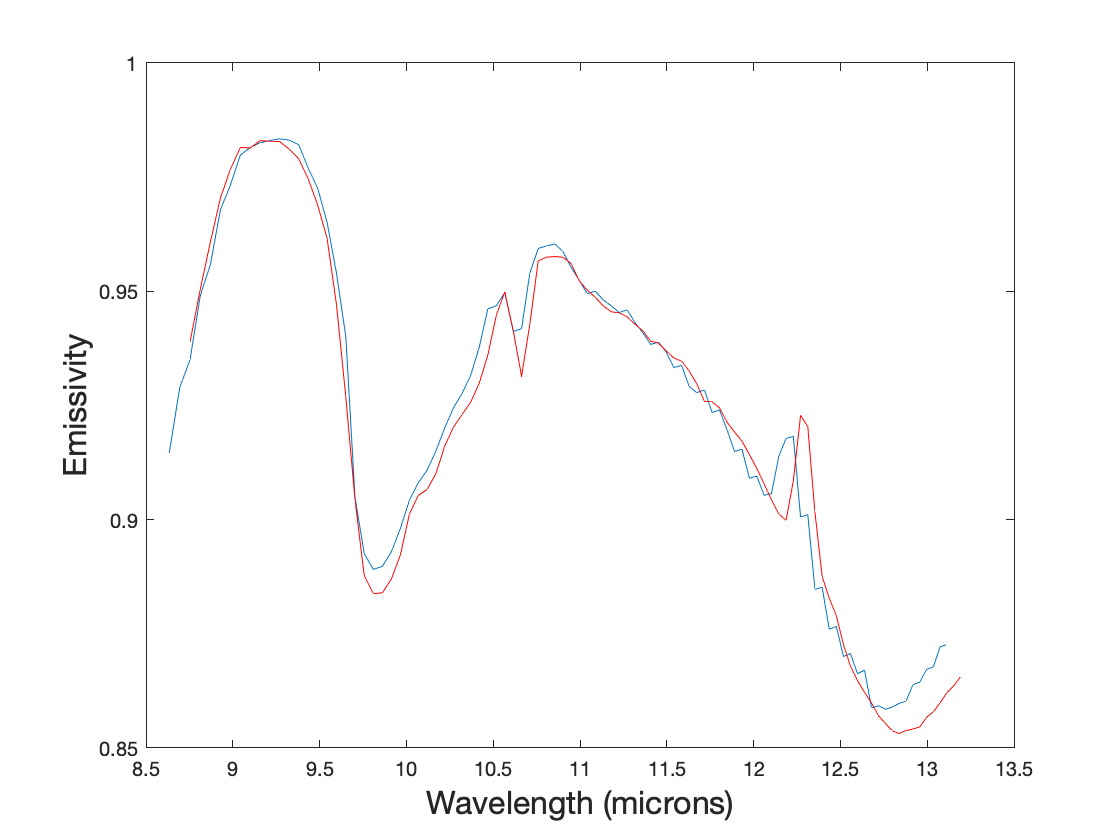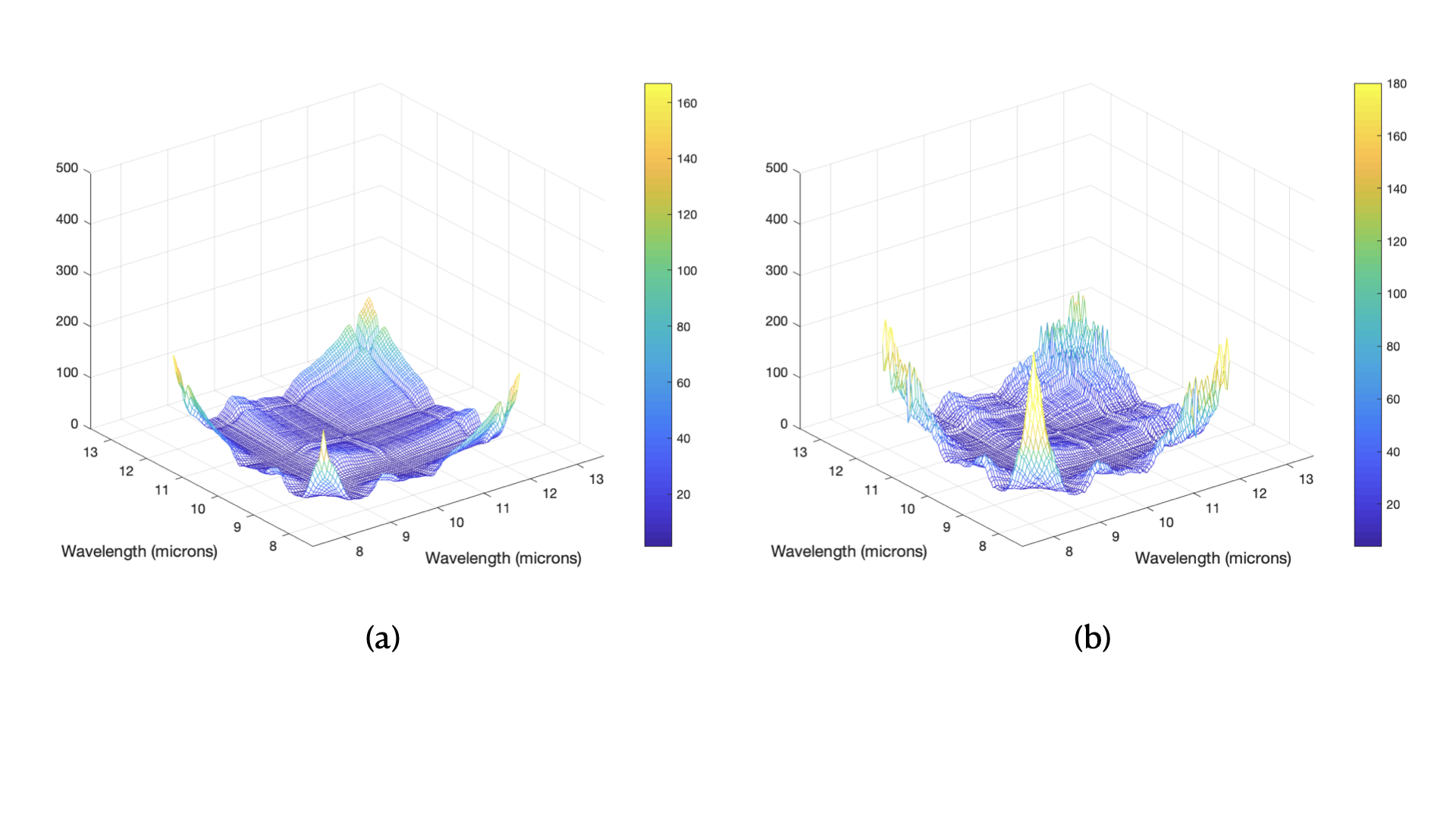Integrating TES and modern target detection capability into FASSP model
Principal Investigator(s)
Emmett Ientilucci
Research Team Members
Runchen Zhao
Project Description
A material's (say a powder) surface emissivity can be affected by many things including particle size, for example. Increasing or decreasing the particle size can vary the dominant scattering sources between surface scattering and volume scattering. Thus, how the particle size impacts target detection performance is a valuable question, especially in the LWIR domain. To analyze this, parameter trade-off studies focusing on particle size can be studied using Forecasting and Analysis of Spectroradiometric System Performance (FASSP) model. FASSP is an end-to-end system performance forecasting analysis tool which uses first and second order statistics associated with targets and background. The current FASSP model does not have a temperature/emissivity separation (TES) algorithm which is needed to perform realistic analysis in the LWIR. In addition, a state-of-the-art and wildly used detection algorithm called adaptive cosine estimator (ACE) is to be implemented. Due to the nature of FASSP (i.e., propagating statistics), ACE cannot be directly coded into the model. An alternative and equivalent algorithm called the cotangent detector will be utilized instead.
We have already finished the development of statistical TES algorithm and implemented it into FASSP. Some validations using the newly improved FASSP have been completed. These results have been assembled into a journal paper which is almost ready for submission.

